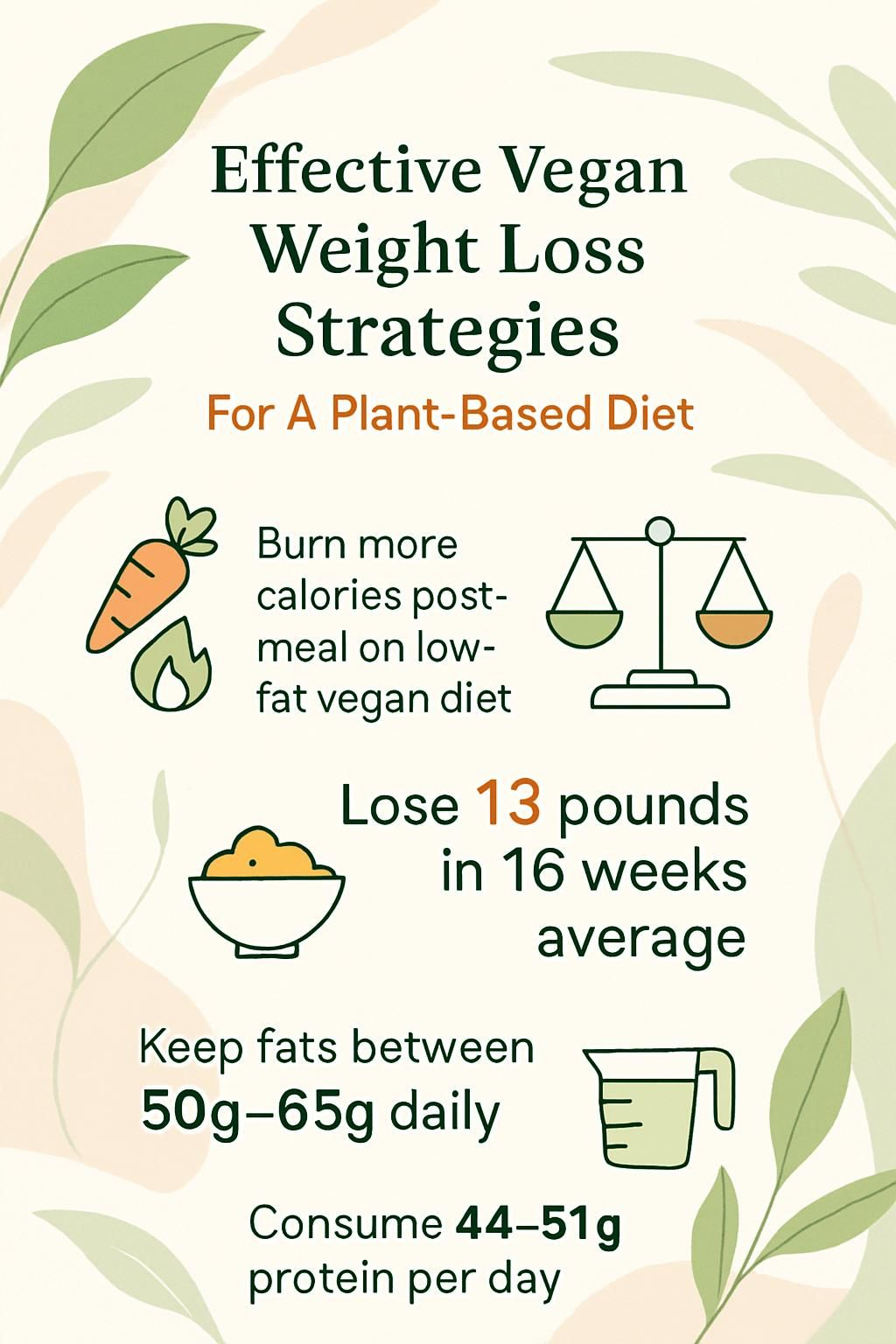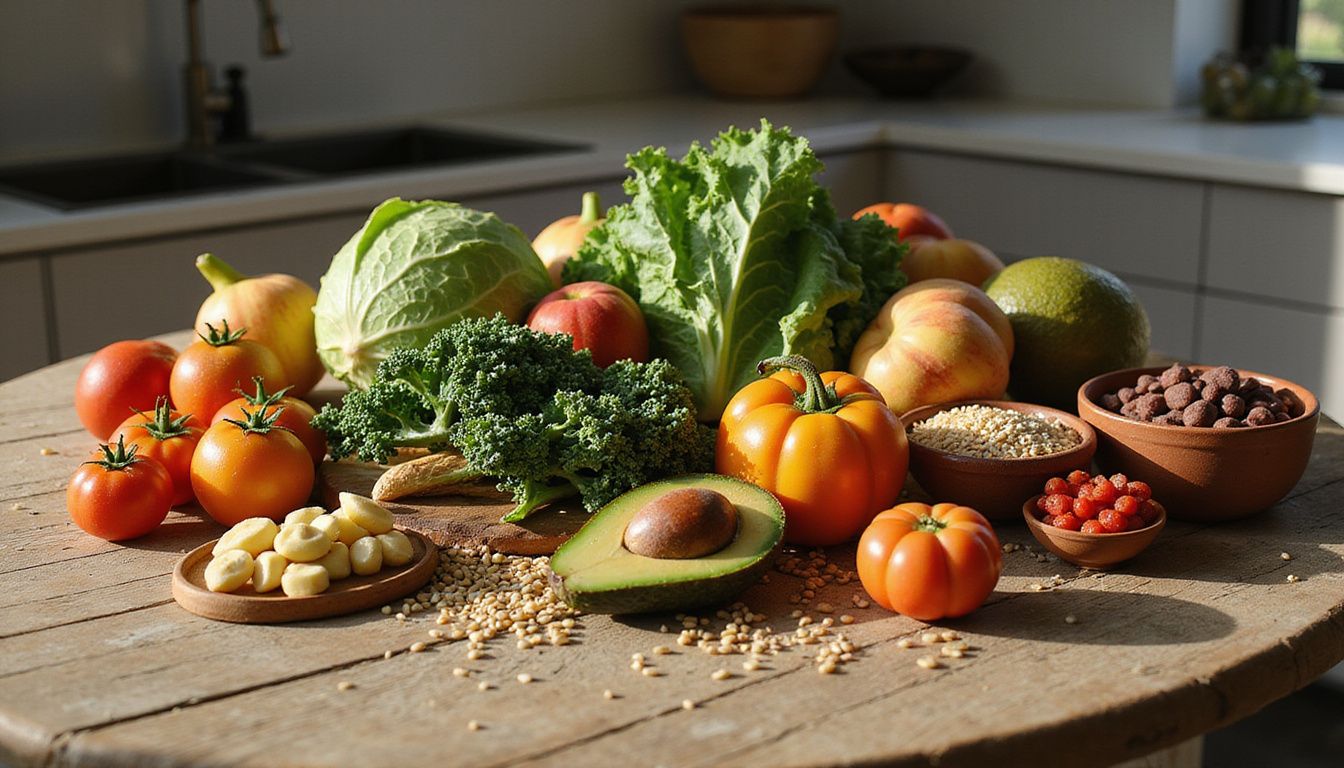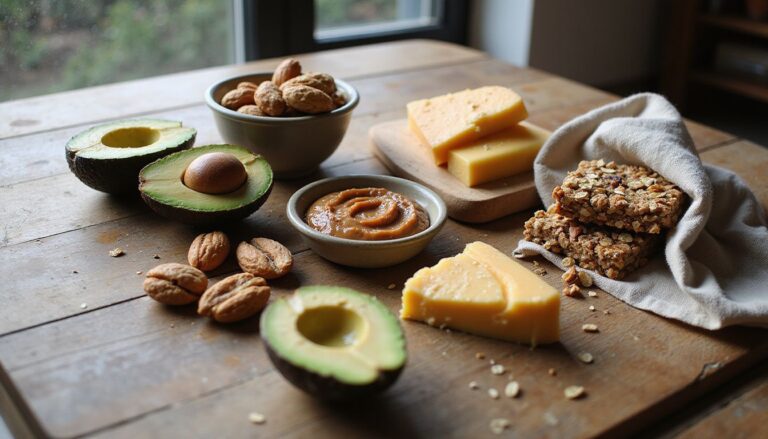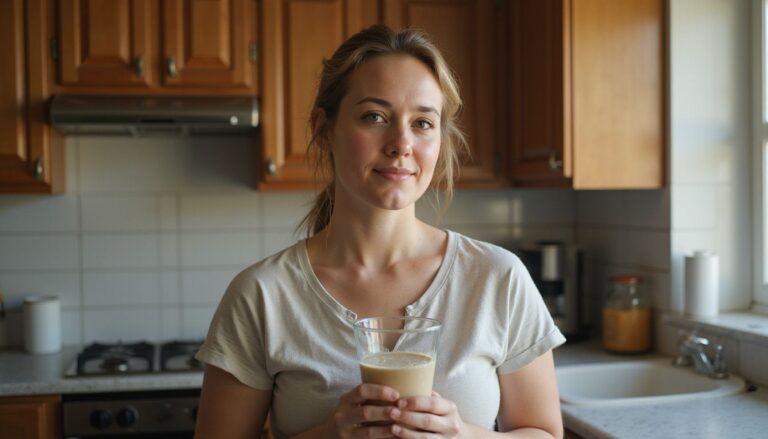Effective Vegan Weight Loss Strategies For A Plant-Based Diet
Our Nutrition Assistant AI Suite will transform your body. You will lose fat, get toned, and build muscle. Gain confidence and optimal health.
Losing weight on a vegan diet can feel confusing. You may worry about protein or get stuck with processed foods. Interest in plant-based nutrition keeps rising in the United States, even though only a small share of adults eat fully vegan today.
This guide breaks down vegan weight loss with clear, science-backed steps. You will learn how to use whole foods, smart portions, and simple habits to manage weight and feel better.
Key Takeaways
- A 2024 randomized clinical trial from the Physicians Committee reported that people on a low-fat vegan diet burned more calories after meals and lost about 13 pounds in 16 weeks.
- Choose high-fiber, whole plant foods, such as legumes, leafy greens, quinoa, and brown rice. These foods are filling and have low calorie density, which supports weight control.
- Limit ultra-processed vegan snacks, refined grains, added oils, and sugary drinks. Keep total fats near 50 to 65 grams per day to avoid slowing progress.
- Meet daily protein needs, about 44 to 51 grams, with lentils, tofu, tempeh, and seitan. Supplement vitamin B12 and monitor calcium, iron, vitamin D, and zinc.
- Pair mindful eating with regular aerobic activity and at least two strength sessions each week to support metabolism and long-term results.

How a Vegan Diet Supports Weight Loss

A well-planned vegan diet supports weight loss because it centers on fiber-rich, lower calorie foods. Choosing nutrient-dense meals can improve your body mass index, which is a measure of weight relative to height.
How does fiber in a vegan diet help you feel full?
Fiber absorbs water and expands in your stomach. This stretching signals your brain that you have eaten enough, so you stop sooner. High-fiber foods also take longer to digest, which helps you stay satisfied.
Good options include legumes, oats, quinoa, brown rice, leafy greens, and fruit. These foods steady your blood sugar, reducing energy crashes and snack urges between meals. On days you load your lunch with beans and whole grains, you often feel full for hours.
Eating more plant fiber each day can increase fullness and support healthy weight loss.
Diet patterns high in fiber are linked with lower risk of obesity, diabetes, and heart disease. Many plant foods also have low calorie density, so you can eat satisfying portions while keeping calories in check.
Why do plant-based foods have lower calorie density?
Most plant foods contain a lot of water and fiber, and less fat. This means fewer calories in each bite. Leafy greens, vegetables, fruit, legumes, and whole grains fill you up without adding many calories.
For example, a cup of raw spinach has about 20 to 30 calories and is over 90 percent water. In contrast, cheese or fatty meat has many more calories for the same volume. Plant-based meals replace saturated fat and cholesterol found in animal products with complex carbohydrates from foods like oats, quinoa, millet, beans, and tofu.
People often find they can eat larger portions of these foods and still lose weight. Research supports this pattern, linking plant-focused diets with meaningful weight loss due to lower calorie density and higher nutrient quality.
Can a vegan meal increase calorie burning after eating?
Yes. A low-fat vegan meal can raise diet-induced thermogenesis, which is the calories you burn after eating. In a 16-week randomized trial in 2024, participants on a low-fat plant-based diet burned more calories after meals and lost an average of 13 pounds. The Mediterranean group in the study did not lose weight.
The plant-based group also reduced advanced glycation end products, or AGEs, by 73 percent. High AGEs are linked with insulin resistance and inflammation. Most AGEs come from animal foods and high-heat cooking, so eating plant-based meals helps lower your exposure.
These changes often bring steadier energy and less post-meal sluggishness. Knowing this, you can lean on whole, low-fat vegan meals to support calorie burn and appetite control.
Key Vegan Weight Loss Strategies
Effective vegan weight loss starts with simple, repeatable choices. The aim is to make each meal balanced, filling, and easy to maintain.
Why focus on whole, unprocessed vegan foods?
Whole foods are naturally high in fiber and low in calorie density. Leafy greens, beans, lentils, vegetables, fruit, and whole grains provide vitamins, minerals, and protective plant compounds that processed snacks often lack.
A 2022 review in Frontiers in Nutrition linked minimally processed plant-based diets with better weight outcomes. You feel fuller for longer because of the fiber. These foods also support a healthy gut microbiome, which plays a role in metabolism and immunity.
Choosing real food helps your body work better.
People who follow whole-food plant-based eating patterns tend to have lower risk of heart disease and type 2 diabetes than those who rely on ultra-processed foods. Portion control becomes easier when meals are naturally filling.
How to build meals with vegetables, legumes, and whole grains?
Use a simple plate formula. It keeps you full, supports steady energy, and protects your calorie budget.
- Fill half your plate with leafy greens or non-starchy vegetables like broccoli, spinach, kale, carrots, or peppers.
- Add at least one serving of legumes, such as lentils, beans, or chickpeas, for protein and slow carbs. A cup of cooked lentils has about 18 grams of protein; black beans provide about 15 grams.
- Include whole grains like quinoa, brown rice, oats, or barley. One cup of cooked quinoa has about 8 grams of protein and 5 grams of fiber.
- Use smaller portions of higher calorie plant fats, such as nuts, seeds, and avocado. For example, 1 tablespoon of chia seeds or a quarter avocado adds healthy fat without too many calories.
- Mix colorful vegetables with your protein for taste and nutrient balance. Think Falafel Salad or a Black Bean and Quinoa Bowl.
- Batch-cook basics like quinoa, beans, and roasted vegetables. Having ready parts makes weeknight meals fast and consistent.
- Combine protein, such as beans or tofu, with complex carbs, such as brown rice or oats, to support steady blood sugar through the day.
This framework gives you structure and flexibility. It also sets up the next step, choosing the best protein sources.
What are good plant-based protein sources for weight loss?
Protein helps preserve muscle during weight loss and improves satiety. These options are easy to use in daily meals.
- Legumes, including lentils, beans, and chickpeas, offer about 15 to 18 grams of protein per cooked cup and plenty of fiber.
- Tofu and tempeh, both from soybeans, are versatile. A half cup of tofu has around 10 grams of protein; tempeh offers about 15 grams.
- Seitan, made from wheat gluten, provides about 21 grams of protein per 3 ounces.
- Quinoa is a grain with all nine essential amino acids. One cooked cup adds about 8 grams of protein.
- Plant protein powders, such as pea, soy, or rice, help fill gaps on busy days.
- Nuts and seeds, including pumpkin seeds, hemp seeds, almonds, and chia, add 5 to 9 grams of protein per ounce plus healthy fats.
- Whole grains like oats, millet, barley, and brown rice contribute moderate protein and fiber for recovery and fullness.
- Soy milk delivers about 7 grams of protein per cup and works well in smoothies and oatmeal.
- Wheat germ adds about 6 grams of protein per ounce. Sprinkle on cereal or blend into shakes.
Rotating these foods supports muscle, appetite control, and variety while you cut calories.
How much healthy fat should you include in a vegan diet?
Include healthy fats from avocado, nuts, seeds, and plant oils in moderate amounts. Many weight loss plans set total fat near 50 to 65 grams per day.
Fats help you feel satisfied and absorb vitamins A, D, E, and K. Oils are calorie dense, so they add up fast. Balance each meal by pairing healthy fat with legumes or tofu and a whole grain. Small snacks, like a handful of nuts or seeds, can prevent cravings without overshooting your goals.
Tracking fat for a week can reveal hidden sources and portion creep. That quick check often improves results.
Foods to Prioritize for Vegan Weight Loss
Some plant foods make weight loss easier. They supply volume, fiber, and nutrients with fewer calories per bite.
Which leafy greens and non-starchy vegetables aid weight loss?
Spinach, kale, Swiss chard, and romaine are low in calories and high in fiber. Four cups of mixed salad greens add only about 25 to 40 calories, yet they help you feel full.
Non-starchy vegetables, such as broccoli, cucumbers, celery, bell peppers, and cauliflower, keep calories low while adding crunch and color. A cup of broccoli has roughly 31 calories and provides vitamin C and a bit of protein.
Use celery sticks or cucumbers for snacks. Build salads with greens plus beans or edamame to add protein and iron. These shifts raise fullness and can reduce body weight over time, especially when paired with regular movement.
What fruits are best for fiber and vitamins on a vegan diet?
Fruit adds fiber, vitamins, and antioxidants that support digestion and satiety. Blackberries provide about 2 grams of fiber in a quarter-cup serving. Plums offer vitamin C and potassium in a convenient snack.
Oranges hydrate and deliver vitamin C while easing sugar cravings with few calories. Bananas add prebiotic fiber that feeds healthy gut bacteria. Berries of all kinds have low calorie density and high phytonutrients that support long-term health.
Choose a mix across the week. Variety helps you meet fiber and micronutrient goals during weight loss.
How do legumes like lentils and chickpeas support weight loss?
Legumes combine protein with slow-digesting carbs, a pairing that keeps you full longer. One cup of cooked lentils has about 18 grams of protein and 15 grams of fiber. This helps control appetite, so you can eat fewer calories without feeling deprived. Edamame is also a useful snack because it provides both protein and fiber.
Legumes help steady blood sugar by slowing glucose absorption. They are rich in lysine, an essential amino acid that can be limited in some grains. Meals like White Bean and Avocado Toast appear often in plans because beans support muscle while calories stay modest.
Research links frequent bean intake with better glucose control and smaller gains in body weight compared with diets low in legumes.
*USDA FoodData Central, 2019: cooked lentils. Systematic reviews from 2022 discuss body weight changes with plant-based diets.
Why include whole grains like quinoa, oats, and brown rice?
Legumes cover protein and fiber, and whole grains round out the plate. Quinoa is notable because it contains all nine essential amino acids. Batch-cooking quinoa saves time and boosts both fullness and nutrient intake.
Oats make a steady breakfast that keeps hunger in check. Brown rice adds the amino acid methionine and pairs well with beans. Other whole grains, such as millet, barley, corn, rye, sorghum, teff, and triticale, add variety and B vitamins. Their fiber supports gut health and steadier blood sugar.
What plant proteins are effective for vegan weight loss?
Tofu, tempeh, and seitan offer high protein with modest calories. They fit easily into stir-fries, salads, and sandwiches. Plant-based protein powders help you reach daily targets if meals fall short.
Edamame and beans are staples in many vegan meal plans because they support lean mass while you cut calories. Pair quinoa with legumes for a complete amino acid profile. Seitan provides a protein-dense option for variety.
Mixing sources, such as tofu, edamame, and chickpeas, helps cover nutrients like lysine and tryptophan that may be lower in some grains or vegetables.
How do nuts, seeds, and avocados contribute healthy fats?
Nuts, seeds, and avocados supply unsaturated fats that support hormones and help you feel satisfied. A small portion goes a long way. For example, snack on 2 tablespoons of pumpkin seeds or use 1 tablespoon of peanut butter at breakfast.
Healthy fats help you absorb fat-soluble vitamins. Avocado makes a great topping for toast, bowls, and salads. Many people find that adding a small amount of these foods improves taste and reduces afternoon cravings.
Foods to Limit or Avoid
Some vegan foods can slow weight loss. They often pack extra calories, sugar, or added oils with little fiber.
Which processed vegan snacks and meals should be avoided?
Limit ultra-processed vegan items such as packaged cookies, chips, imitation cheeses, and many ready-made meat substitutes. These foods often contain high sodium, additives, and refined starches.
For instance, some plant-based burgers exceed 400 milligrams of sodium per patty and include fillers instead of whole ingredients. Vegan ice creams and pastries can be high in sugar and calories. These choices add up quickly and lack the fiber and micronutrients found in whole foods.
Favor meals built from legumes, leafy greens, whole grains like oats or corn, and simple seasonings. You will feel fuller and meet nutrient needs more easily.
Why limit sugary beverages on a vegan weight loss plan?
Sugary drinks, such as soda, sweet tea, energy drinks, and sweetened plant milks, add calories without fullness. They can spike blood sugar, which often leads to more hunger and higher calorie intake later.
High intake of sugar-sweetened beverages is linked with weight gain and higher risk of type 2 diabetes. Choose water for hydration. Unsweetened tea or plain plant milks are better picks than sweetened shakes.
Trimming liquid sugar helps you hold a calorie deficit and protects long-term health.
How do refined grains affect your weight loss efforts?
Refined grains, such as white bread and many processed snacks, digest quickly and cause blood sugar spikes. The fall that follows can trigger hunger and cravings.
These foods have less fiber than whole grains like oats, brown rice, and quinoa. Eating many refined grains can push total calories higher because they are less filling. Switching to whole grains often leads to steadier energy, fewer cravings, and easier portion control.
What is the impact of excessive added oils in a vegan diet?
Oils are calorie dense. One tablespoon has about 120 calories and no fiber. Generous pours can raise your daily intake fast, which makes weight loss harder.
Lowering added fats can also reduce AGEs, harmful compounds linked with inflammation. Many plans suggest keeping total fat to 50 to 65 grams per day from all sources. Choose whole-food fats such as nuts, seeds, and avocado more often than oils. This swap supports heart health and satiety.
Combining Vegan Diet with Lifestyle Changes
Diet is one piece. Simple daily habits make your plan stronger and easier to sustain.
How can mindful and intuitive eating support weight loss?
Mindful eating means paying attention to hunger and fullness cues. Eating slowly gives your brain time to catch up with your stomach, which supports portion control and reduces emotional snacking.
Focus on satiety, not just calories. Adjust meal sizes based on your true appetite. This approach makes it easier to pass on ultra-processed choices and to enjoy whole foods that keep you satisfied.
Why is staying hydrated important for weight management?
Staying hydrated helps control appetite. Thirst often feels like hunger, which can lead to needless snacking. Drinking water before meals may reduce how much you eat.
Good hydration supports digestion and energy during workouts. Replacing sugary drinks with water or unsweetened tea can cut calories and improve focus through the day.
What types of physical activity complement a vegan diet?
Aerobic activities, such as walking, cycling, dancing, or group fitness, raise your heart rate and help your body use glucose. Strength or resistance training two or more days per week helps preserve lean muscle as you lose weight.
Combine both styles for best results. Even short sessions add up. Pair steady activity with high-fiber meals from greens, legumes, and whole grains.
How does adequate sleep improve weight loss results?
Short sleep disrupts appetite hormones. Ghrelin rises and leptin falls, which increases hunger and reduces fullness the next day. This shift can push you to eat more, even if your meals are well planned.
Quality sleep supports metabolism and reduces cravings for highly processed snacks. A steady bedtime routine helps you manage stress and maintain your plan.
Overcoming Common Challenges
Meeting protein needs, avoiding highly processed food, and staying consistent can be hard. Small changes help you move forward without feeling overwhelmed.
How to ensure enough protein on a vegan diet?
Aim for 44 to 51 grams of protein each day. Feature a protein-rich food in every meal, such as legumes, tofu, tempeh, seitan, or a plant protein shake.
Use quinoa often since it contains all essential amino acids. Snack on edamame or pumpkin seeds. Tracking your intake for a week can reveal gaps and easy fixes.
What are common nutrient deficiencies and how to prevent them?
Vitamin B12, calcium, vitamin D, iron, and zinc deserve attention on a vegan diet. Take a B12 supplement because plants do not supply it. Use fortified plant milks and cereals to support calcium and vitamin D.
Eat legumes, tofu, and greens to cover iron and calcium. Whole grains, nuts, and seeds support zinc. If you are pregnant, very active, or managing a medical condition, speak with a healthcare professional about testing and tailored supplementation.
How can you manage cravings for processed foods?
Stock whole-food snacks you enjoy, such as fresh fruit, raw vegetables, roasted chickpeas, or a small handful of nuts. High-fiber meals slow digestion and steady blood sugar, which cuts cravings.
Plan your meals ahead so you are not stuck with vending machine choices. Drink water through the day since mild dehydration can feel like hunger. Mindful eating helps you pause and choose what you truly want.
What strategies help maintain consistency when dining out or traveling?
Check menus online and note the best vegan options. Pack portable snacks like nuts, seeds, dried fruit, or oat cups for reliable energy.
Share your needs clearly with restaurant staff to avoid hidden animal ingredients, such as eggs or fish sauce. Favor simple dishes like salads with beans, grain bowls with quinoa, or vegetable stir-fries. Batch-cook a few meals before trips and track your intake to stay on target.
Apps and online communities can help you find plant-based dining wherever you go. Keeping a small stash of shelf-stable foods in your bag makes it easy to stay on plan.
Long-Term Benefits of a Vegan Weight Loss Plan
A thoughtful vegan diet can help you manage weight and feel more energetic. Research from controlled trials links plant-forward eating with a lower risk of diabetes and heart disease.
How does a vegan diet improve weight management?
Plant-based diets are associated with lower rates of overweight and obesity. High-fiber foods with low calorie density help you feel full while eating fewer calories. Many plans also cut saturated fat and cholesterol, which supports heart health.
Focusing on nutrient-dense meals makes appetite regulation easier. Many people find they can keep steady losses of one to two pounds per week when they pair these foods with a calorie deficit and regular movement.
Can a vegan diet lower the risk of diabetes and heart disease?
Yes. Plant-based eating patterns are linked with better blood sugar control and improved blood lipids. Lower intake of saturated fat and higher intake of fiber, antioxidants, and minerals help reduce inflammation.
Over time, these changes can improve markers tied to type 2 diabetes and cardiovascular disease. Making whole foods the base of your meals supports long-term health.
What energy and health improvements can you expect long-term?
A fiber-rich vegan diet often brings steadier energy and better digestion. Many people notice clearer skin, more regular bowel habits, and improved workout recovery.
Lower intake of processed foods can reduce AGEs, which supports less inflammation. Healthy fats from nuts, seeds, and avocado can help balance hormones and sustain vitality. A routine of balanced meals over months tends to compound these gains.
Note: Nutrition is personal. Speak with a registered dietitian or your clinician if you have medical conditions, take medications, or need an individualized plan.
Tips for Sustained Success
Consistency beats intensity. Plan simple systems you can repeat on busy weeks.
How to plan and prepare vegan meals in advance?
Map a 7-day meal plan that targets your calorie needs. Center your grocery list on whole foods. Prepare large batches of staples like brown rice, quinoa, beans, and roasted vegetables.
Wash and chop leafy greens for quick salads and stir-fries. Keep ready snacks, such as cut fruit or a small bag of mixed nuts, to avoid ultra-processed options. Include reliable protein, such as lentils or chickpeas, and take a B12 supplement as advised by your healthcare provider.
Why try diverse vegan recipes for lasting weight loss?
Diversifying recipes keeps meals interesting and raises nutrient variety. Rotate leafy greens, legumes, whole grains like quinoa or oats, and small amounts of healthy fats.
New flavors reduce boredom, which helps prevent cravings for processed foods. Swapping refined grains for brown rice or adding seed toppings are simple ways to trim calories while keeping taste.
How can tracking progress help adjust your strategies?
Tracking helps you see what works. Log meals, portions, and hunger levels. Watch your calorie averages and protein intake.
Look for patterns. If certain breakfasts keep you full longer, repeat them. If late-night snacking shows up, plan an earlier, higher fiber dinner or a protein-rich evening snack. Small data-driven tweaks can restart progress.
Where to find support from online communities or professionals?
Join vegan weight loss forums and groups on platforms like Reddit or Facebook. Shared tips and encouragement can increase motivation and adherence.
If you want personalized guidance, work with a registered dietitian trained in plant-based nutrition. A professional can help you hit nutrient targets, refine your plan, and troubleshoot plateaus.
Conclusion
Plant-based eating makes weight control simpler when you focus on fiber-rich foods, lean plant proteins, and modest fats. Build meals around vegetables, legumes, and whole grains like quinoa and brown rice. Keep processed foods and sugary drinks to a minimum.
Pair your vegan diet with hydration, regular activity, mindful meals, and steady sleep. Plan ahead, track what matters, and reach out for expert support if needed. These strategies help you lose weight and keep it off while protecting long-term health.
Sources referenced include the Physicians Committee randomized trial (2024), Frontiers in Nutrition review (2022), and USDA FoodData Central for nutrient values.
FAQs
1. How does a plant-based diet support overall health during weight loss?
A plant-based diet supports overall health by providing fiber, vitamins, and minerals from whole foods. Studies show that people who follow this eating pattern often have lower cholesterol and blood pressure compared to those on animal-based diets (Barnard et al., 2015). These benefits help maintain heart health while losing weight.
2. What are the effects of a low-fat vegan diet on body weight?
A low-fat vegan diet can reduce calorie intake without sacrificing essential nutrients. Research found that participants following a low-fat, plant-focused plan lost more body fat than those eating higher fat diets (Turner-McGrievy et al., 2007). This approach also helps control hunger due to high fiber content.
3. Does switching to a vegan meal plan always lead to weight loss?
Switching to a vegan meal plan may not guarantee weight loss if processed foods or sugary snacks remain part of daily meals. Choosing whole grains, vegetables, fruits, and legumes is key for effective results; these options promote fullness with fewer calories.
4. Can reducing dietary fats improve the effectiveness of a plant-based regimen for losing pounds?
Reducing dietary fats in a plant-centered menu can make it easier to cut total calories while still meeting nutritional needs. Data shows that limiting oils and fatty spreads leads many individuals to experience greater drops in both scale numbers and waist size over time (Kahleova et al., 2018).
Summary: A well-planned vegan approach focused on whole foods improves overall health outcomes during weight management efforts. The effects of a low-fat strategy include better appetite control and steady progress toward goals when paired with nutrient-rich choices rather than processed items or added sugars.
References:
– Barnard ND et al., “Vegetarian Dietary Patterns and Mortality,” JAMA Internal Medicine, 2015.
– Turner-McGrievy GM et al., “Comparative Study of Plant-Based Diets,” Obesity Journal, 2007.
– Kahleova H et al., “Effectiveness of Low-Fat Vegan Diets,” Nutrition & Diabetes Journal, 2018.
Personal Experience: After shifting my own routine toward more beans, leafy greens, oats, berries, and lentils instead of packaged snacks or fried food options I noticed improved energy levels along with gradual but consistent changes in my waistline measurements over several months.







